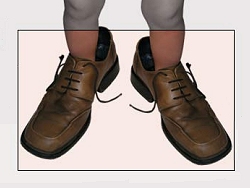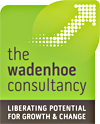|
Step Change Leadership Potential  Current Performance alone is not a predictor of future potential. So how do we recognise whether someone has potential, and how far they can go in an organisation? Contrary to what we may think, potential is measurable and predictable. However, past performance in itself is not an adequate guide. We need to know not just how people have behaved in the past, but how they will think and act in the future. Over the years there have been many studies, including our own "Learning for the Top" research, of people who have risen to the top of their chosen activity. All of these studies share two common themes:
"What can this person learn to do that they have never done or been asked to do before?" The "Potential" Challenge Known problems do not require a great deal of thinking about. Future, unknown problems do. Potential is Future capacity. Solving problems at higher, more complex levels requires more than analysis, it needs the addition of creative thinking and judgement. The capability to integrate larger and larger amounts of information becomes essential to success, which in turn calls for higher levels of capability to generalise and conceptualise. If this is the Intellectual "thinking" challenge that comes with step changes in responsibility, what about the increased volume of new, more complex internal and external relationships? This is where the Temperament "doing" challenges of leadership become increasingly important. To undertake an action, the first requirement is to accept personal responsibility and have the Drive for producing a result. Life in general and working life in particular is rarely straightforward - there are setbacks and disappointments along the way, and it is personal Resilience to persist with alternative approaches that helps us through them. Finally, we often need to get things done with and/or through other people and the capabilities involved here are associated with Emotional Intelligence. Apologies if this sounds obvious, but if it is, why do so many organisations still fall into the trap of placing so much reliance on current performance as a predictor of future potential? We know this from the conversations we have had recently with organizations who are still seriously concerned about the impact of their inconsistent talent identification and development in three key areas:
Understanding fully the "step changes" as jobs get bigger In order to gain this understanding it is necessary to be able to answer one fundamental question - potential for what? For many years we have worked with a Rolescoping™ framework of core transferable "thinking", "doing" and "transition" leadership qualities. We have recently refined this still further to provide precise understanding of step changes involved at four generic leadership levels, which we have called:
Accurately identifying potential for bigger jobs Once step change levels are clearly defined, there are many reliable ways of measuring potential. In our experience, two of the most effective are through:
Development Centres: In one day our Development Centre provides real clarity about an individual's promotion potential in each of the core transferable leadership qualities and in various diverse organisational contexts. Whilst it shares some of the characteristics of practical exercises and interviews, our process is much more structured and closely defined than either. It relies on looking for specific behaviours in a set situation, and clearly categorising the level of capability that is achieved. (See our article on Development Centres) Working with Wadenhoe For over 20 years The Wadenhoe Consultancy has been working in partnership with organisations to design, deliver and sustain leadership and organisation development activities that have measurable and permanent performance outcomes. It is not our style to make assumptions about the precise needs of organisations. We are however very clear that the new work described in this article, has the potential to make a real difference. So here are some ways that we currently work with organisations to increase the effectiveness of their talent identification and development:
|
